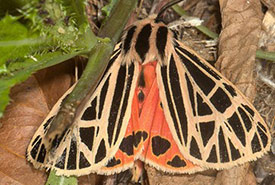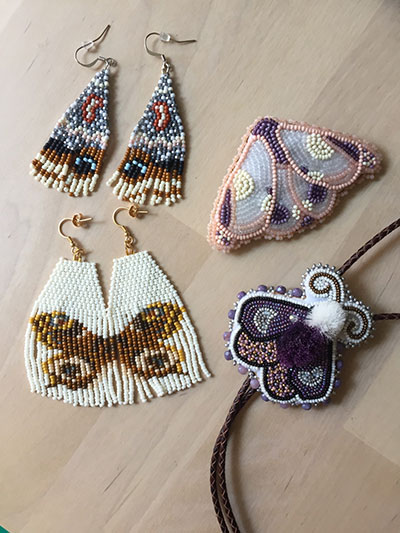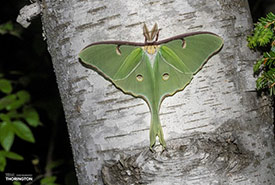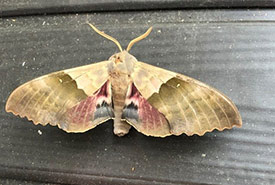My fuzzy muse

Virgin tiger moth (Photo by Nolie Schneider – CC 4.0 via iNaturalist)
I used to think moths were ugly. Compared to their colourful, beloved cousins — butterflies — moths are hardly ever prized to win the blue ribbon at the beauty pageant. Often monotone, muted and furry — the latter of which makes for a very creepy crawly — they don’t really ever stand out from the crowd.
Except when it comes to Indigenous beadwork.
In my personal life, I draw inspiration from nature to create my beadwork. From bison landscapes to painted portraits of wildlife on naturally shedded antler cuttings, the land is woven tightly within my beadwork. It wasn’t until I was asked by a fellow Indigenous beadworker what I would like them to make for me that my obsession with the underrated and underrepresented moth was spurred.

Four moth beadwork pieces (From top left clockwise: xʷəlməxʷ beadwork @xwelmexwbeadwork, Reags Beads @reagsbeads (pink moth pin), Story Bead Creations @manidoominens_adizookaan (moth bolo), Diving Loon Co. (@divingloonbeads))
In Ontario, there are more than 3,000 species of moths. In North America there are nearly 12,000 moth species, which is more than 10 times as many species as birds. Moths are some of the most diverse and thriving organisms on Earth, with an amazing array of colours and patterns. Despite how they are normally depicted with drab colours, some of these species are actually quite vibrant. For example, the adult virgin tiger moth features colours and a pattern that rival its namesake. A personal favourite of mine is luna moth, with its vibrant green and unusually shaped wings.
If these anything-but-drab moths aren’t enough for me to pick up my needle and thread, their fuzzy faces have me sitting down with some caribou hair to get tufting.
The spotted tussock moth, also known as yellow spotted tiger moth, can be found from Labrador all the way west across Canada. Its body and upper hind legs are covered in light-coloured, bristly fur. Another fuzzy critter that I find inspiring is big poplar sphinx, or modest sphinx. When this moth is in its caterpillar form, it chews through the stalks of damaged leaves, removing them from the tree. This is done to hide from birds that, when looking for a snack, will scope out damaged leaves to find caterpillars.

Luna moth (Photo by timthorington, CC BY-NC 4.0 via iNaturalist)
Even though they are under-studied, moths are incredibly important to the ecosystems they live in and are essential to the survival of many other types of wildlife. Adult moths and their caterpillars are important food for a wide variety of species, including other insects, spiders, frogs, toads, bats and birds. In fact, moths make up a major part a bat’s diet.
Moths are also important pollinators, helping flowers reproduce while they feed on their nectar and help in seed production. They help to pollinate wild plants, garden plants and food crops. They are also a great indicator species, meaning their widespread and diverse populations can tell conservationist about the health of an area.
I’ve been fortunate enough to have connected with many Indigenous beaders across Canada, many of whom I am honoured to wear work from. When asked what I would like them to make, I ask them to find inspiration in the humble moth.

Big polar sphinx (Photo by Alan Macnaughton, CC BY-NC 4.0)
I’m not alone in creating work that is deeply inspired by the environment. From beautiful leatherwork to fringe earrings, my collection of moth-inspired work from Indigenous artists across Canada is growing. And with it, my appreciation for my muse: the beautiful moth.
You can contribute scientific data about moths by documenting and submitting observations of them on iNaturalist. From July 17 to 25, people of all ages and abilities are invited to celebrate National Moth Week, to learn and observe moths in their neighbourhoods. Join an iNaturalist project near you >


